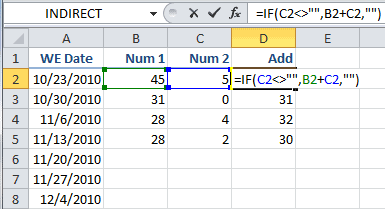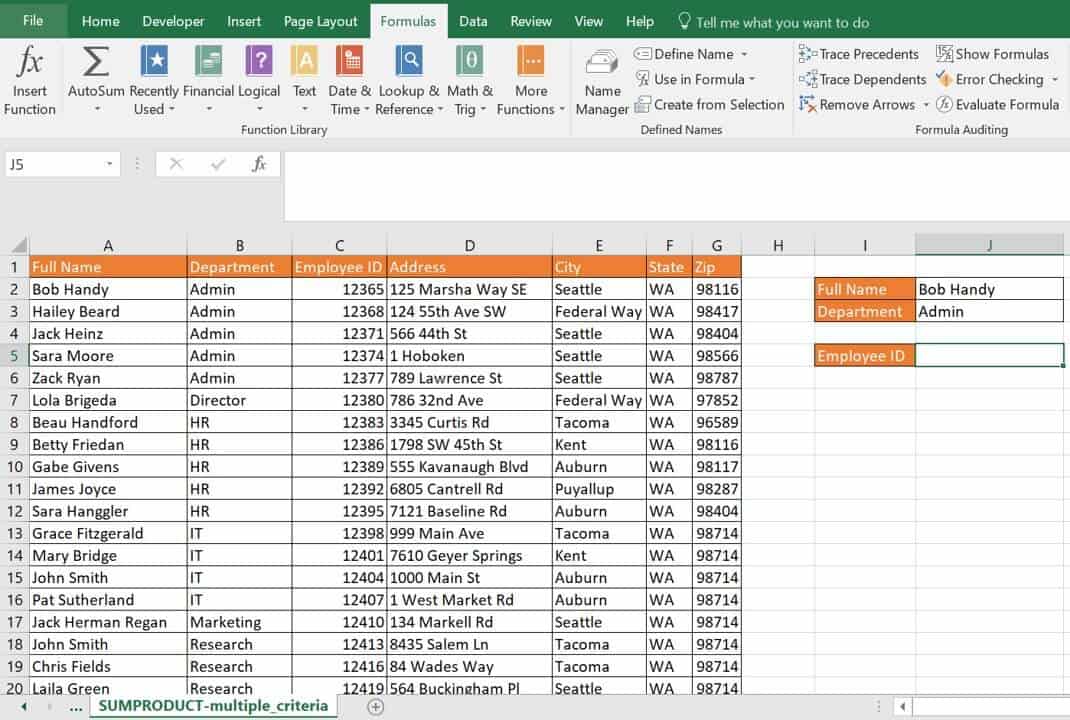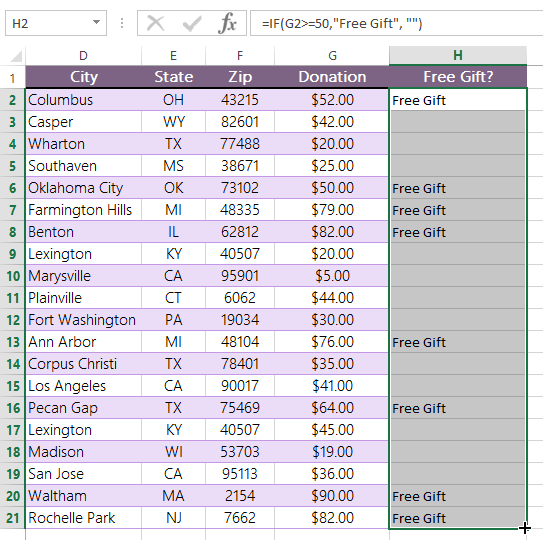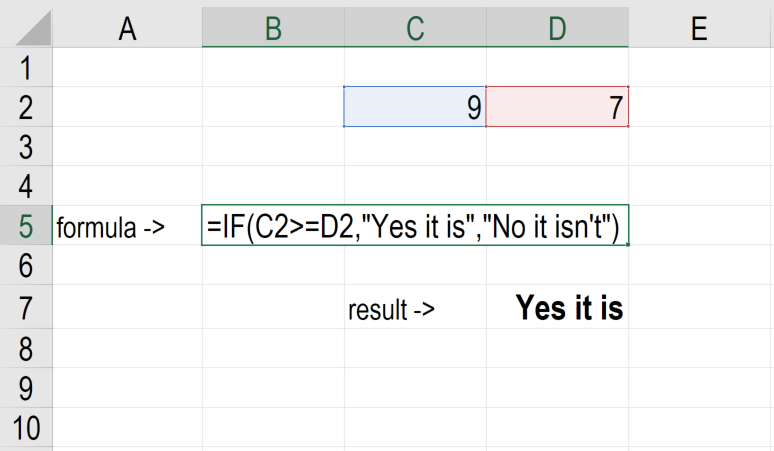
Excitement About Excel If Blank
Free Investment Banking Course IB Excel Templates, Accounting, Valuation, Financial Modeling, Video Clip Tutorials * Please offer your correct e-mail id. Login details for this Cost-free program will certainly be emailed to you
Utilize the IF feature when you intend to evaluate something, and show one result if the examination outcome holds true, and also a various result if the test result is False. NOTE: In several instances, an additional Excel feature would certainly be extra effective than an intricate IF formula. See the examples listed below.


IF the Amount cell is vacant, or IF the Rate cell is vacant, leave the complete cell vacant. (Embedded IF formula) IF the "Neighborhood" check box is inspected, include a sales tax obligation. Usually, another Excel function works much better than IF. Here are some instances of calculations where you should NOT utilize IF: Converting pupils' numeric grades to letter qualities-- use VLOOKUP Select a rates of interest, based upon the deal date-- use HLOOKUP Program a certain worth instead of an error result-- usage IFERROR (Excel 2007 as well as later) There are 3 parts (disagreements) to the IF feature: EXAMINATION something, such as the worth in a cell.
Define what ought to occur if the test outcome is FALSE. In this instance, the Total in cell E 7 should just reveal a quantity if the Quantity has actually been gone into in cell D 7. These are the 3 parts (disagreements) to the IF function for this instance: EXAMINATION cell D 7, to see if it is vacant (D 7=""),.
The Greatest Guide To Excel If Formula
If D 7 is not empty (INCORRECT), the cell with the Overall formula will multiply Cost x Quantity (C 7 * D 7) The finished formula is: =IF(D 7="","", C 7 * D 7) In the display shot below, cell D 7 is vacant (TRUE), so the IF formula in cell E 7 likewise looks vacant.
You can nest one or more IF functions within another IF function, to develop even more choices for the outcomes. In this example, the formula has two IF features, to examine both the Rate as well as the Amount cells IF the Price cell is vacant (""), the overall will be vacant ("") Then, IF the Quantity cell is empty (""), the overall will be vacant ("") Or else, increase Cost x Qty to calculate the Overall When constructing nested IF solutions, the order in which the examinations are listed could be essential.
Some embedded IF solutions can be replaced by a VLOOKUP formula, for even more flexibility. See the instance of transforming numeric grades to letter grades for trainees. In this instance, the orders are kept in a named Excel Table. Consequently, there are structured references in the formula, that show the area names, as opposed to normal cell recommendations.
Here is that formula from Example 1, created with structured references: =IF( [Qty] ="","", [Rate] * [Qty] To check both the Rate as well as Amount cells, an additional IF will certainly be included in the existing formula: =IF( [Cost] ="","", IF( [Qty] ="","", [Rate] * [Qty]) If the Price cell is empty (REAL), the cell with the Overall formula will certainly show nothing ("") If the Qty cell is empty (REAL), the cell with the Complete formula will certainly reveal nothing ("") If neither cell is empty, the total is computed ([ Price] * [Qty] The results for every feasible situation are revealed listed below.
See This Report on Excel If Function Multiple Conditions
For instance, in the adhering to formula, there are two tests: =IF(B 2 >=20000,"Excellent", IF(B 2 >=10000,"Ordinary","Poor")) If the quantity in cell B 2 is 25000, the outcome would be "Great", since it is higher than 20000. Nevertheless, if the examinations are turned around, the formula would certainly look for >=10000 first.: =IF(B 2 >=10000,"Average", IF(B 2 >=20000,"Excellent","Poor")) Currently, if the quantity in cell B 2 is 25000, the result of the formula would certainly be "Ordinary", due to the fact that the results of that initial test hold true.
On the order kind, there is a check box that is linked to cell G 11. For neighborhood orders, click the check box, to add a check mark, as well as the connected cell programs TRUE If the check mark is removed, the linked cell shows FALSE The IF formula in the Tax obligation cell checks the connected cell, to see if it contains "FALSE".
Otherwise the subtotal is increased by the Tax Price. =IF(G 11=FALSE,0, E 10 * G 12) To follow the instances in this tutorial, download and install the example IF workbook .
In this situation, the DAYS function belongs to the examination: The current information is contrasted with the specified date (in F 2) and also the difference in the number of days is presented. IF checks whether the matter is greater than 30. If this is the instance, the "then_value" where you've placed a mathematical calculation occurs: a price cut is offered to the initial value (in cell F 2).
Excel If Then Fundamentals Explained
Certainly, you can likewise include specifications for then and else. The one drawback of the IF feature is that the examination just understands 2 results: TRUE or FALSE. If you wish to differentiate between several problems, though, a brand-new IF function can happen rather than the "else_value," which then executes an additional check.

For this, we have two problems: The last sale took location even more than thirty day earlier, as well as there are no even more than 10 products in stock. Therefore, we require to put an "As Well As" link in the test criterion as well as an additional if-then demand in the else parameter, because we wish to make 3 results possible: 50% price cut, 25% discount, as well as no discount rate.

The Excel IF Declaration examines a given problem and returns one worth for a REAL result as well as another value for a FALSE outcome. As an example, if sales total more than $5,000, then return a "Yes" for Incentive-- Otherwise, return a "No" for Reward. We can additionally use the IF feature to evaluate a single feature, or we can consist of a number of IF functions in one formula. if formula excel multiple columns if formula excel picture if formula excel value